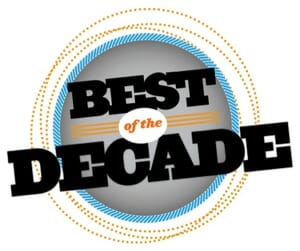
Upton Sinclair, Bob Woodward, and Carl Bernstein may have set the standard for muckraking in the 20th century, but their heirs apparent are as likely to pick up a video camera as they are a pen when they fight the battles of the 21st. Technical advances have put professional tools into the hands of amateurs, but they explain only part of the reason that so much muckraking has moved from newspapers to video.
Living in an information-rich society, we’ve all become skimmers. Reading a book from cover to cover, is a luxury that fewer people indulge in, yet the headlines, sound bites, viral videos, and tweets that season our daily ambiance don’t have the depth to help us understand an increasingly complex world. Bridging that paradox is the documentary film: short enough that it doesn’t require a major commitment but long enough to make a complex argument without interruption.
Whether you think they’re full of holes or iron-clad, films like An Inconvenient Truth, Sicko, Bowling for Columbine, Expelled, Enron: The Smartest Guys in the Room, The Corporation, and The Fog of War—all made in the past decade—present arguments that develop only with time and concentration.
And where the problems are too complex for even 90 minutes, a hybrid approach can work. The best example is the recent film Food, Inc., which opened many eyes to the major problems of the country’s food supply, mostly by skimming ideas that are probed more deeply in the books of Michael Pollan and Eric Schlosser. Having seen the film, newly engaged viewers, energized by its potent, condensed content, might next turn to the books themselves, and maybe the authors’ blogs, for more information, letting the media work in tandem.
Given the troubled state of theatrical distribution, many documentaries are more likely to be seen at home than the mall. But who will finance them? Even with so many outlets—from traditional theaters and aging broadcast television to new and unproven avenues like SnagFilms, YouTube, and Netflix Instant—most documentarians are unlikely to earn enough to keep working. It’s a gap that’s yet to be bridged: the distance between the obvious value of hard-nosed reporting and the cost of getting the results in front of an audience. Robert Davis
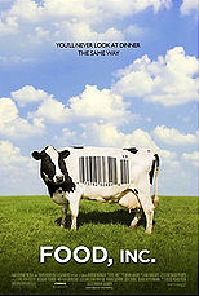
25. Food, Inc. (2009)
Director: Robert Kenner
Starring: Eric Schlosser, Michael Pollan
Studio: Magnolia Pictures
Instead of filling his film with scary, hard-hitting footage, Kenner made a well-reasoned documentary that politely pushes you towards its viewpoint. This lack of radicalism has made the film one of the most effective propellers for expanding the farm-to-table movement.
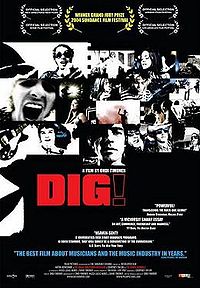
24. Dig! (2004)
Director: Ondi Timoner
Starring: Courtney Taylor-Taylor, Anton Newcombe
Studio: Palm Pictures
Chronicling seven years of the turbulent, fast-paced career of The Dandy Warhols and The Brian Jonestown Massacre, Dig! reveals the gritty, messy details of the ‘90s rock scene and complicated friendships and ambitions that formed it. The film goes beyond footage of sex and drugs to tell the urgent and compelling story of two bands seeking fame and radical musical revolution. Plus, the whole thing is available to view for free at Hulu.com. Caroline Klibanoff

23. Gleaners and I (2000)
Director: Agnès Varda
Starring: Bodan Litnanski, François Wertheimer
Studio: Zeitgeist Films
The law of the ancient Israelites commanded farmers not to be overzelous in harvesting so that some crops would remain for travelers and the poor to collect (Leviticus 19:9-10). This tradition of gleaning from the fields—and even from urban environments—continues in France, where director Varda follows the various gleaners in the city and country. Josh Jackson
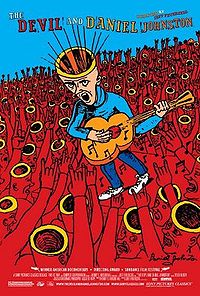 22. The Devil and Daniel Johnston (2006)
22. The Devil and Daniel Johnston (2006)
Director: Jeff Feuerzeig
Starring: Daniel Johnston
Studio: Sony Pictures Classics
A haunting profile of a man obsessed with the devil and plagued by mental illness, and the transcendent music he made throughout his life. Daniel Johnston captured the hearts of critics and fans while being shuffled in and out of mental hospitals, burdened by his demons and liberated by his piano keys. Caroline Klibanoff
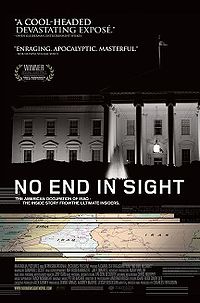 21. No End In Sight (2007)
21. No End In Sight (2007)
Director: Charles Ferguson
Starring: Campbell Scott
Studio: Magnolia Pictures
After several years of fine and varied documentaries on Iraq, Ferguson came along to sum up the American side of the debacle—the fear, hubris and missed opportunities—with great efficiency. It’s an especially good, if infuriating primer for those who’ve grown exhausted of following daily reports from the Persian Gulf. Robert Davis
 20. No Direction Home (2005)
20. No Direction Home (2005)
Director: Martin Scorsese
Starring: Bob Dylan
Studio: Paramount Pictures
Borrowing D.A. Pennebaker’s and Andy Warhol’s Best Dylan footage from 1961 to 1966—the most important, influential period in the master songwriter’s career—and combining it with a series of informal mid-’90s interviews with everyone from Allen Ginsberg and Dave Van Ronk to otherwise tight-lipped ex-girlfriend Suze Rotole and even Dylan himself, Scorsese creates an immersive filmic collage that does as much to create further intrigue around its shadowy subject as peel back the curtain and offer a glimpse of the mysterious man pulling the strings. Steve LaBate
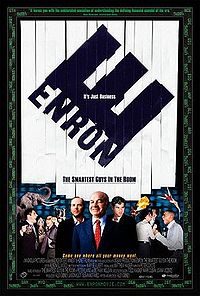 19. Enron: The Smartest Guys in the Room (2005)
19. Enron: The Smartest Guys in the Room (2005)
Director: Alex Gibney
Starring: Andrew Fastow, Jeffrey Skilling, Kenneth Lay, Peter Coyote, Gray Davis
Studio: Magnolia Pictures
In a cautionary tale of corporate greed, negligence and diffusion of responsibility, the leaders of Enron defrauded employees and investors out of millions, encouraging others to stay aboard a sinking ship while they were quietly bailing themselves out. Among the highlights of Enron: The Smartest Guys in the Room is Alex Gibney’s montage that cross-cuts footage of Stanley Milgram’s 1961 social experiment with images of the chaos caused by Enron in the 2000 California energy crisis, narrated by phone calls between ruthlessly jovial Enron traders, all set to Los Straightjackets’ “California Sun.” The unexpected wit and verve with which this documentary tells its infuriating tale is what sets it apart. Emily Riemer
 18. Anvil: The Story of Anvil (2008)
18. Anvil: The Story of Anvil (2008)
Director: Sacha Gervasi
Starring: Steve “Lips” Kudlow, Robb Reiner
Studio: Abramorama
The story of a hugely influential but largely forgotten Canadian heavy-metal band now in their fifties, might seem like the Spinal Tap sequel, complete with aging rockers suffering through demeaning gigs, the memory of the big show in Japan, the visit to Stonehenge, even an amp that actually goes to 11. But director Sascha Gervasi is playing those cards very deliberately, and Anvil! The Story of Anvil is moving and very real. When we find Steve “Lips” Kudlow and Robb Reiner (yes, his real name) at the present-day beginning of the film, they’re stuck in dead-end jobs in Toronto (Lips drives a delivery truck; Robb works construction). But they’re still rocking together, just as they made a pact to do 36 years ago in high school. And Lips’ and Robb’s tireless devotion to their dreams, and to each other, is Gervasi’s secret weapon. He draws you in with the silliness, but sets his hook with the sweetness. Michael Dunaway
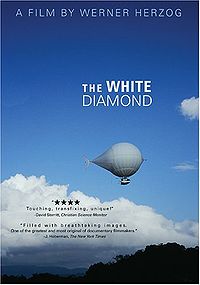 17. The White Diamond (2004)
17. The White Diamond (2004)
Director: Werner Herzog
Starring: Graham Dorrington, Werner Herzog, Dieter Plage
Studio: Werner Herzog Filmproduktion
The subject of Werner Herzog’s 2004 film is aeronautical engineer Graham Dorrington and his unconventional aircraft, but Herzog’s curiosity also leads him to explore the Kaieteur Falls of Guyana and the diamond miners and birds hidden within. Josh Jackson
 16. God Grew Tired of Us (2007)
16. God Grew Tired of Us (2007)
Director: Christopher Quinn
Starring: John Dau, Nicole Kidman, Daniel Abul Pach
Studio: Newmarket Films
This stirring documentary follows the trials faced by the Lost Boys of Sudan, both before and after their integration into American society. While their plight is dark, the film is ultimately an uplifting example of the adversity the human soul can face while still maintaining hope. “One of the things people come away with from the film,” director Quinn said to Paste in 2006, “something I didn’t really see as I was filming—was the critique on America. It’s easy to see where the excess is. The Lost Boys came here and were evaluating everything. John [Bul Dau] is hoping to see a communal celebration at Christmas, but it’s all quantifiable materialism.Josh Jackson
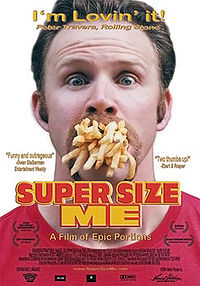 15. Super Size Me (2004)
15. Super Size Me (2004)
Director: Morgan Spurlock
Starring: Morgan Spurlock
Studio: Samuel Goldwyn Films
Super Size Me was a documentary that America wished was a mockumentary, but it was all too true. Few other filmmakers have paid such a heavy toll for their projects as Morgan Spurlock, the host who subjected himself to 30 days of only eating McDonald’s food for three meals a day, always opting for the Super Sized servings when asked. One month and 24 1/2 pounds later, Spurlock revealed some of fast food’s dirtiest secrets. Gage Henry
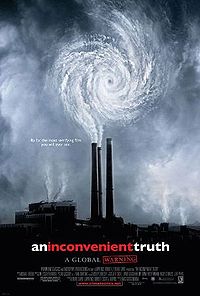 14. An Inconvenient Truth (2006)
14. An Inconvenient Truth (2006)
Director: Davis Guggenheim
Starring: Al Gore
Studio: Paramount Classics
Al Gore proved himself a better narrator than a campaigner, with an Oscar for a consolation prize after losing the Presidency in 2004. And despite having its scientific conclusions questioned, the film gave the issue of global warming a voice much louder than an audible sigh. Josh Jackson

13. Jesus Camp (2006)
Director: Heidi Ewing, Rachel Grady
Starring: Becky Fischer, Mike Papantonio
Studio: Magnolia Pictures
This hard-to-watch film follows three children who attend a charismatic Christian summer camp called Kids On Fire in North Dakota. The kids speak in tongues, believe global warming is a political conspiracy, and bless a cardboard cutout of George W. Bush. There’s no need for a narrator or editorial opinion—the footage says it all. It’s no surprise that the camp closed after the film’s release. Kate Kiefer
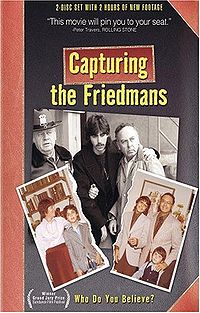 12. Capturing the Friedmans (2003)
12. Capturing the Friedmans (2003)
Director: Andrew Jarecki
Starring: Arnold Friedman, Elaine Friedman, David Friedman, Seth Friedman, Jesse Friedman
Studio: Magnolia Pictures
This is the story of Arnold Friedman and his son Jesse, who were convicted of multiple counts of child molestation that took place in the basement of their home in a quiet New York suburb during the ‘80s. In Capturing the Friedmans, filmmaker Andrew Jarecki interviews the victims and prosecutors, but never reaches a conclusion as to the veracity of the charges, tacitly acknowledging that guilt and innocence are fluid concepts in such sensational and shameful circumstances. Instead, he documents the implosion of the family and the destruction of an already tenuous marriage. Surely, the details of the abuse are disturbing, but almost as unsettling is the cruelty with which the two older Friedmans reject their mother in blind loyalty to their shamefaced father and numb younger brother, further facilitating the family’s emotional separation. Emily Reimer
 11. Born into Brothels (2004)
11. Born into Brothels (2004)
Director: Zana Briski
Starring: Shanti Das, Puja Mukerjee, Avijit Halder, Suchitra
Studio: ThinkFilms
Zana Briski was working as a documentary photographer in Calcutta when she began teaching photography to children of prostitutes. The resulting film, though not without controversy, offered a glimpse into the difficult lives of the kids. Briski’s continued Kids With Cameras project offers hope a path for some kids to find new opportunities outside the brothels, but there’s no candy-coating the difficulties facing the kids, even once they’ve headed off to school. Josh Jackson
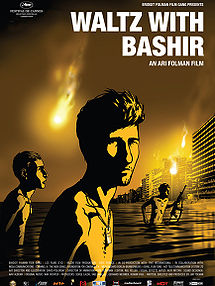 10. Waltz with Bashir (2008)
10. Waltz with Bashir (2008)
Director: Ari Folman
Starring: Ari Folman
Studio: Sony Pictures Classics
As much about memory’s hallucinatory inventions as the facts of the 1982 massacre at a Palestinian refugee camp in Beirut by the so-called Phalangist Christian militia, Ari Folman’s animated Waltz With Bashir begins with 26 barking dogs rushing through a city. From there, the emotional intensity doesn’t let up. Though Folman, a veteran Israeli documentarian, calls Bashir a documentary based on the interviews at its core (mostly with fellow soldiers), his cameras go places the handiest cinematographer could never venture: Beams of light bend between branches during a forest battle; and the dream images of rising naked from the sea—while balls of fire fall from the sky—are just as real as the chasm-like blank spots in Folman’s mind as he reconstructs his mission into Lebanon. Powerful beyond a doubt, especially during a fourth-wall shattering climax, Waltz With Bashir borrows the visualized mind games of Richard Linklater’s recent efforts and dances them to the deep end. Jesse Jarnow
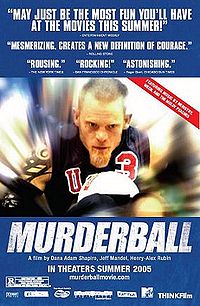 9. Murderball (2005)
9. Murderball (2005)
Director: Henry Alex Rubin, Dana Adam Shapiro
Starring: Keith Cavill, Andy Cohn, Scott Hogsett, Christopher Igoe, Mark Zupan, Bob Lujano, Joe Soares
Studio: MTV Films
As a documentary that sets out to shatter our assumptions about quadriplegics, Murderball succeeds admirably by painting its characters as regular guys—or not even regular guys but testosterone-fueled jocks proud of their aggressive playing and proud of their dicks (which still function, they’re quick to point out, even if their legs or arms don’t). These young men play wheelchair rugby, which they aptly called “murderball” before it gained enough popularity to earn corporate sponsorship and a place in the Paralympic Games. It’s a sport played by teams in armored wheelchairs who roll around on an indoor court, where knocking each other sideways incites a roar from the crowd. It has all the trappings of any other team sport, including hot-headed coaches, displays of bravado and nail-biting championship games. Despite all the adrenaline, the heart of the movie is something more important than just a game: it’s acceptance of yourself. Each tough, competitive personality shelters a damaged but recovering self-image. Robert Davis
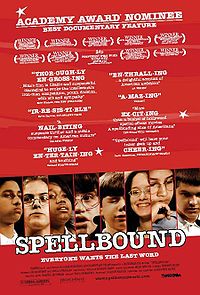 8. Spellbound (2002)
8. Spellbound (2002)
Director: Jeffrey Blitz
Starring: Harry Altman, Angela Arenivar, Ted Brigham, April DeGideo, Neil Kadakia, Nupur Lala, Emily Stagg, Ashley White
Studio: ThinkFilm
Who would have imagined that a documentary about a spelling bee could hold all the intrigue and drama of an SEC football game? Blitz’s film does everything that good non-fiction should—make the viewer care deeply about a story, even when there’s no prior interest in the subject matter. Josh Jackson
 7. When the Levees Broke: A Requiem in Four Acts (2006)
7. When the Levees Broke: A Requiem in Four Acts (2006)
Director: Spike Lee
Studio: 40 Acres & A Mule Filmworks
Hurricane Katrina’s impact on New Orleans spawned thousands of stories, and Spike Lee fits as many as he can into this film’s swift and lively four hours—tales of humor, passion, fear and anger, from the city with a broken heart. Robert Davis
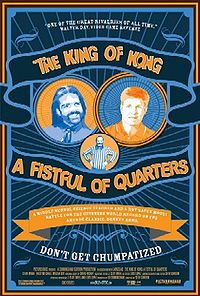
6. King of Kong: A Fistful of Quarters (2007)
Director: Seth Gordon
Starring: Steve Wiebe, Billy Mitchell
Studio: Picturehouse
In Seth Gordon’s feature directorial debut, newcomer Steve Wiebe challenges longtime world-champion Donkey Kong player Billy Mitchell for the highest score in the game’s history. After it becomes obvious that Wiebe may threaten to depose the competitive gaming world’s longtime hero, countless roadblocks are thrown in his path by both Mitchell’s fans and the gaming institution itself. As Wiebe becomes increasingly embroiled in this subculture, he ends up learning ?rsthand about the disturbing lengths people will go to in order to be the best at something, regardless of how silly that something may be. A humanistic comedy in the vein of early Errol Morris, the ?lm’s contest is every bit as exciting as any sports ?lm, while also shedding light on how obsessions can combine with corrupt power structures to drive otherwise normal people to ridiculous ends. Sean Gandert
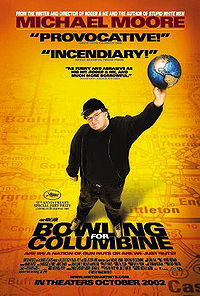 5. Bowling For Columbine (2002)
5. Bowling For Columbine (2002)
Director: Michael Moore
Starring: Michael Moore
Studio: United Artists
Michael Moore can sometimes seem glib and shrill, driving even his supporters nuts. But with Columbine, arguably his most important film, he successfully tackles the insanity of America’s gun problem—a problem so insane that Marilyn Manson, in a candid interview, emerges as the voice of reason. Nick Marino
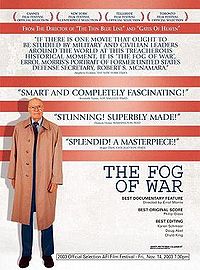
4. The Fog of War (2003)
Director: Errol Morris
Starring: Robert McNamara
Studio: Sony Pictures Classics
For those who lived through the ’60s, the name Robert McNamara provokes an entire range of emotions and experiences. But even those too young to remember the former U.S. Secretary of Defense will find Errol Morris’ amazing film an incredibly relevant portrait of a man who helped shape the 20th century. The primary thrust of the movie is a series of interviews Morris did with McNamara beginning in May 2001 and continuing through the winter of 2002-03. It’s principally a movie about war, which is why McNamara’s 13-year reign as the president of the World Bank is unfortunately ignored. However, the film raises enough issues, provokes enough questions and challenges enough assumptions to make it essential viewing. J. Robert Parks
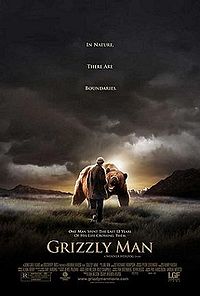
3. Grizzly Man (2005)
Director: Werner Herzog
Starring: Timothy Treadwell, Werner Herzog
Studio: Lions Gate Films
This pro?le of nature lover Timothy Treadwell, who unwisely tried to live among wild bears in Alaska until he was devoured, cuts a Herzogian swath across the hillside: A man attempts to ?nd harmony with nature but instead ?nds, as Herzog puts it, “chaos, hostility and murder.” Looming over the ?lm is not only the horror of Treadwell’s demise but also an audio recording of the tragedy, taped inadvertently by the video camera in Treadwell’s tent. Herzog tastefully omits it from the ?lm, but he makes the viewer aware of its existence. “The question of the tape which recorded Timothy Treadwell’s death and Amie Huguenard’s death is something that I had to address,” Herzog told Paste in 2007. “So I listened to it, and that’s the only time I appear in the ?lm. You only see me from behind, listening to it with earphones. The interesting thing is that Jewel Palovak who was working with Treadwell and living with Treadwell for 20 years tries to read my face, and it’s very, very intense and moving for her. The moment I heard the tape it was instantly clear: Only over my dead body is this tape going to end up in the movie. I’m not into doing a snuff ?lm, and I have to respect the dignity and privacy of two individuals’ deaths.” Robert Davis

2. Iraq in Fragments (2007)
Director: James Longley
Studio: HBO Documentary Films
Applying the full spectrum of cinematic technique to a nonfiction film, Longley made one of the most striking movies this year, an immersive view of life in Iraq; a record of opinions and faces from across the country, all captured at close range. Robert Davis
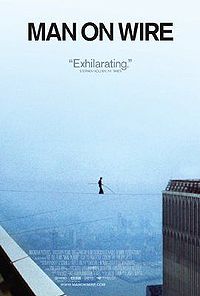
1. Man On Wire
Director: James Marsh
Starring: Philippe Petit
Studio: Magnolia Pictures
In 1974, high-wire walker Philippe Petit fulfilled a longstanding dream by sneaking into New York’s World Trade Center, stringing a cable between the tops of the two towers, and—with almost unfathomable guts—walking across it without a net. The man is clearly a nut, but he’s also a great storyteller with a heck of a story, and Man on Wire gives him a chance to tell it. Petit’s stunt was both an engineering challenge and a test of, well, a test of something that most of us don’t possess in this much quantity. Filmmaker James Marsh uses standard documentary techniques, combining new interviews with a satisfying pile of footage and photographs, but his film has the suspense of a caper movie. The title comes from the report written by a police officer who was more than a little uncertain about how to respond to the audacity on display. Robert Davis